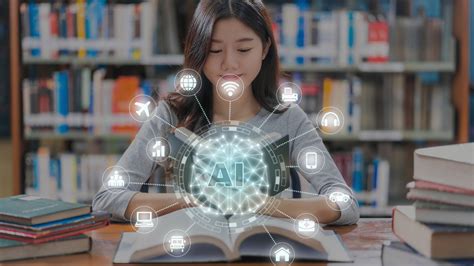Education has always been a cornerstone of human progress, and with the advent of technology, it's transforming in ways we never thought possible. EdTech, or Education Technology, has been making waves in the academic world, and its impact is being felt across the globe. From personalized learning to virtual classrooms, EdTech is redefining the way we learn and teach. In this article, we'll explore seven ways EdTech is revolutionizing education and making it more accessible, effective, and fun.
What is EdTech?
Before we dive into the ways EdTech is changing education, let's define what EdTech is. EdTech refers to the use of technology to enhance and improve learning outcomes. This includes software, hardware, and internet-based tools that facilitate teaching, learning, and assessment. From learning management systems to educational apps, EdTech encompasses a wide range of digital solutions designed to make education more efficient, effective, and engaging.
1. Personalized Learning
One of the most significant ways EdTech is revolutionizing education is through personalized learning. Traditional classroom settings often cater to the needs of the average student, leaving those who need extra support or challenge behind. EdTech solves this problem by providing tailored learning experiences that adapt to each student's learning style, pace, and abilities. Adaptive software, AI-powered learning platforms, and data analytics enable teachers to identify knowledge gaps and provide targeted interventions, ensuring every student receives the support they need to succeed.

2. Virtual Classrooms
EdTech is also transforming the way we think about classrooms. Virtual classrooms, also known as online learning environments, are becoming increasingly popular, especially in the wake of the COVID-19 pandemic. These virtual spaces allow students to connect with teachers and peers remotely, participate in discussions, and engage with course materials in a flexible and accessible way. Virtual classrooms are especially beneficial for students with disabilities, those living in remote areas, or those who need to balance work and family responsibilities with education.

3. Artificial Intelligence in Education
Artificial intelligence (AI) is another area where EdTech is making significant inroads. AI-powered tools are being used to develop intelligent tutoring systems, automate grading, and provide real-time feedback to students. AI-driven chatbots are also being used to support student learning, answering questions, and offering guidance on course materials. Moreover, AI-powered analytics help teachers identify areas where students need extra support, enabling them to target interventions more effectively.

4. Gamification and Engagement
EdTech is also making learning more engaging and fun through gamification. Educational games, simulations, and interactive activities are being used to teach complex concepts, promote critical thinking, and foster creativity. By incorporating game design elements and mechanics into learning experiences, EdTech developers are creating an environment that motivates students to learn and participate.

5. Microlearning and Bite-Sized Content
The rise of microlearning is another significant trend in EdTech. Microlearning involves breaking down complex topics into bite-sized, easily digestible chunks of content. This approach enables students to learn at their own pace, anytime, and anywhere. Microlearning platforms, apps, and websites are being used to provide learners with flexible, self-directed learning experiences that cater to their individual needs and preferences.

6. Virtual and Augmented Reality
Virtual reality (VR) and augmented reality (AR) are being used in education to create immersive, interactive learning experiences. VR and AR technologies enable students to explore complex concepts, visualize data, and engage with abstract ideas in a more concrete and tangible way. From 3D simulations to interactive labs, VR and AR are revolutionizing the way we teach and learn.

7. Data-Driven Insights
Finally, EdTech is providing educators with valuable insights into student learning behavior, performance, and progress. Data analytics and learning analytics tools help teachers track student engagement, identify knowledge gaps, and measure the effectiveness of instructional strategies. By leveraging data-driven insights, educators can refine their teaching practices, optimize learning outcomes, and create a more personalized and effective learning environment.

Gallery of EdTech Innovations






FAQs
What is EdTech?
+EdTech refers to the use of technology to enhance and improve learning outcomes. It includes software, hardware, and internet-based tools that facilitate teaching, learning, and assessment.
How does EdTech benefit students?
+EdTech benefits students by providing personalized learning experiences, virtual classrooms, and access to a wide range of educational resources. It also enables students to learn at their own pace, anytime, and anywhere.
What role does AI play in EdTech?
+AI plays a significant role in EdTech by enabling the development of intelligent tutoring systems, automating grading, and providing real-time feedback to students. AI-powered analytics also help teachers identify areas where students need extra support.
As we've seen, EdTech is revolutionizing education in numerous ways. From personalized learning to virtual classrooms, AI-powered analytics, and gamification, EdTech is making learning more accessible, effective, and engaging. As technology continues to evolve, it's likely that EdTech will play an even more significant role in shaping the future of education.
